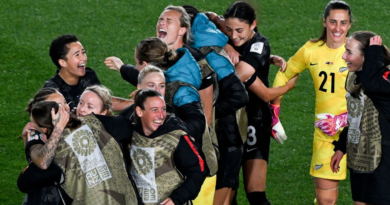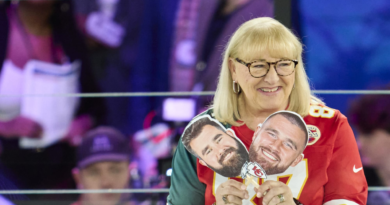WNBA moving to best-of-7 Finals next season
NEW YORK — The WNBA will move to a best-of-seven series for the WNBA Finals starting next season, commissioner Cathy Engelbert said Thursday.
In her address to the media before Game 1 of the Finals between the New York Liberty and the Minnesota Lynx, Engelbert also said the league will go to a 1-1-1 format for the best-of-three first round, giving all playoff teams at least one home game.
In addition, the regular season will expand from 40 to 44 games.
The WNBA has had a best-of-five format for the Finals since 2005. From 1998 through 2004, it was a best-of-three series. The championship in the inaugural WNBA season in 1997 was decided in a single-game format.
The best-of-seven series will have a 2-2-1-1-1 structure in which the higher seed would host Games 1, 2, 5 and 7, and its opponent would host Games 3, 4 and 6.
“This will give our fans a championship-series format they are accustomed to seeing in other sports,” Engelbert said.
The WNBA semifinals will continue to be a best-of-five format.
The first round has changed over the years. Its most recent setup featured the first two games of a best-of-three series played at the home of the higher seed, and a possible third game at the home of the lower seed. But that format didn’t guarantee at least one home game for every playoff team, which the 1-1-1 scenario will do.
Engelbert said the WNBA’s move to charter flights for all games starting this season will help with the playoff format changes.
She also announced that the expansion draft for the league’s 13th team, the Golden State Valkyries, will be Nov. 17 at 5 p.m. on ESPN. It was also confirmed that the Valkyries will pick fifth in every round of the standard draft in April. The Valkyries, who announced new coach Natalie Nakase earlier Thursday, begin play next season.
The WNBA’s regular season moved to 40 games in 2023. Adding four more regular-season games and the potential of longer playoffs means the league is likely to go later into October to finish its season, which generally starts in mid-May.
The league also must plan around international events — the Summer Olympics and the FIBA Women’s Basketball World Cup — every other year. Neither event is held next season, so Engelbert said it was the perfect time to launch the playoff changes, which have been discussed the past few years.
“It’s a constant balancing of the schedule,” Engelbert said. “The league’s growth and increased demand for WNBA basketball made this the ideal time … to provide fans more opportunities to see the best players in the world compete at the highest level.”
The WNBA has two more expansion teams that will begin play in 2026: Toronto and Portland. Engelbert reiterated Thursday the league expects to add one more team no later than 2028. Sixteen teams would match the most the WNBA has had in its history.
With a celebrated draft class this season led by WNBA Rookie of the Year Caitlin Clark of the Indiana Fever and Angel Reese of the Chicago Sky, the league has received larger viewership and media coverage. But that has also come with some challenges, including an uptick of negative remarks on social media.
Last month, Engelbert was criticized by some players and the players’ association for remarks she made on CNBC that they felt didn’t properly address the specific racist, misogynistic and anti-gay tone of some dialogue around the WNBA. Engelbert then wrote a letter apologizing to the players, and Thursday, she reiterated the league’s commitment to protecting players as much as possible.
“The hateful speech and threats directed at our players are troubling,” Engelbert said. “That type of conduct is not representative of the WNBA’s character or fan base. As a league, we stand united in condemning racism and all forms of hate. The WNBA is one of the most inclusive and diverse professional sports leagues in the world. And we will continue to champion those values.”
Asked what specifically the WNBA could do regarding social media, Engelbert said the league would continue to work with the players’ association.
“We’re going to approach this multidimensionally,” she said. “Utilizing technology, prioritizing mental health, reinforcing physical security and increasing monitoring. We know there’s more work to be done, and as a league we are fully committed to listening to the players and other stakeholders.
“There’s no place in sports for this. I think we have been meeting with some technology providers. … There are some technology solutions we could deploy. We have to continue to be a voice against this, condemning it. And find every opportunity to support our players, who have been dealing with this for much longer than this year.”




